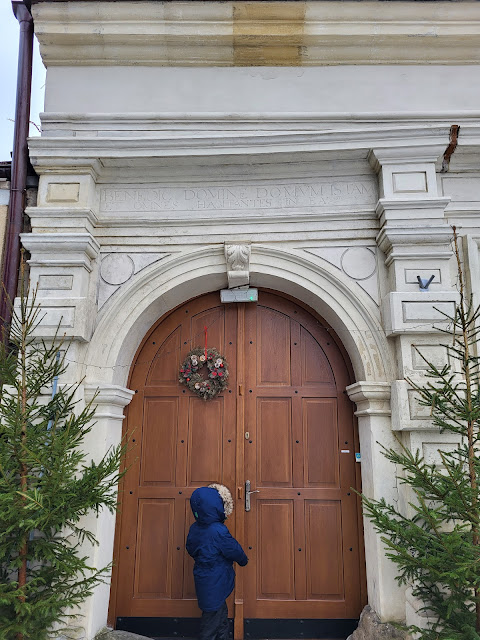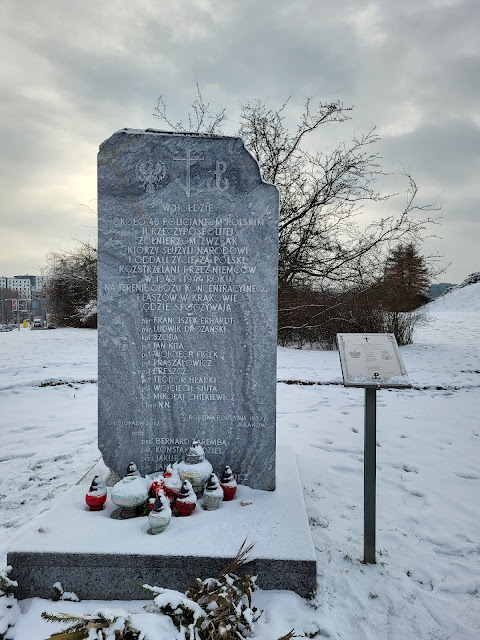Najważniejszy zabytek Wiślicy i jednocześnie jeden z najcenniejszych na świecie przykładów sztuki romańskiej to płyta orantów, znajdująca się w podziemiach bazyliki mniejszej, gdzie zachowały się relikty dwóch świątyń romańskich (obecnie Muzeum Archeologiczne). Pierwsza, starsza świątynia romańska z kryptą ufundowana została przez księcia Henryka Sandomierskiego w połowie XII wieku. Świątynia została rozebrana w pierwszej połowie XIII wieku. Najbardziej prawdopodobną przyczyną było powolne osiadanie w grząskim terenie.
Powierzchnię środkowej nawy krypty zajmowała rytowana jastrychowa posadzka z przedstawieniami figuralnymi, tzw. płyta orantów (1175–1177). Przedstawione na niej modlące się postaci to najpewniej fundatorzy ze swoimi rodzinami: Kazimierz Sprawiedliwy wraz z żoną Heleną Znojemską oraz synami – Bolesławem i Kazimierzem, Henryk Sandomierski oraz niezidentyfikowana osoba duchowna (być może pierwszy prepozyt kościoła, biskup krakowski Gedko albo nawet Wincenty Kadłubek).
Przez całą długość krawędzi wschodniej pola wschodniego biegnie inskrypcja w gipsie: HI CONCULCARI QUERUNT UT IN ASTRA LEVARI: POSSINT ET PARITER VE […] (Ci pragną być podeptani, aby mogli być wzniesieni do gwiazd i zarówno […]).
Plate of orants
The most important monument in Wiślica and at the same time one of the most valuable examples of Romanesque art in the world is the orant slab, located in the basement of the minor basilica, where the relics of two Romanesque temples have been preserved (currently the Archaeological Museum). The first, older Romanesque temple with a crypt was founded by Prince Henryk Sandomierski in the mid-12th century. The temple was demolished in the first half of the 13th century. The most likely cause was slow subsidence in the muddy terrain.

The area of the central nave of the crypt was occupied by an engraved screed floor with figural representations, the so-called orant plate (1175–1177). The praying figures depicted on it are most likely the founders and their families: Casimir the Just with his wife Helena Znojemska and sons - Bolesław and Kazimierz, Henryk Sandomierski and an unidentified clergyman (perhaps the first provost of the church, Bishop Gedko of Krakow or even Wincenty Kadłubek). An inscription in plaster runs along the entire length of the eastern edge of the eastern field: HI CONCULCARI QUERUNT UT IN ASTRA LEVARI: POSSINT ET PARITER VE [...] (Those desire to be trampled on so that they may be raised to the stars and both [...]).
Platte mit Oranten
Das bedeutendste Denkmal in Wiślica und gleichzeitig eines der wertvollsten Beispiele romanischer Kunst weltweit ist die Orant-Platte im Untergeschoss der Basilika Minor, in der die Reliquien zweier romanischer Tempel (derzeit der Archäologisches Museum). Der erste, ältere romanische Tempel mit Krypta wurde Mitte des 12. Jahrhunderts von Fürst Henryk Sandomierski gegründet. Der Tempel wurde in der ersten Hälfte des 13. Jahrhunderts abgerissen. Die wahrscheinlichste Ursache war ein langsames Absinken des schlammigen Geländes.

Den Bereich des Mittelschiffs der Krypta nahm ein gravierter Estrichboden mit figürlichen Darstellungen ein, die sogenannten Orant-Teller (1175–1177). Bei den darauf abgebildeten betenden Figuren handelt es sich höchstwahrscheinlich um die Gründer und ihre Familien: Kasimir der Gerechte mit seiner Frau Helena Znojemska und seinen Söhnen – Bolesław und Kazimierz, Henryk Sandomierski und einem unbekannten Geistlichen (vielleicht der erste Propst der Kirche, Bischof Gedko von Krakau oder … sogar Wincenty Kadłubek). Über die gesamte Länge des östlichen Randes des östlichen Feldes verläuft eine Gipsinschrift: HI CONCULCARI QUERUNT UT IN ASTRA LEVARI: POSSINT ET PARITER VE [...] (Diejenigen wollen mit Füßen getreten werden, damit sie zum Himmel erhoben werden.) Sterne und beides [...]).






























